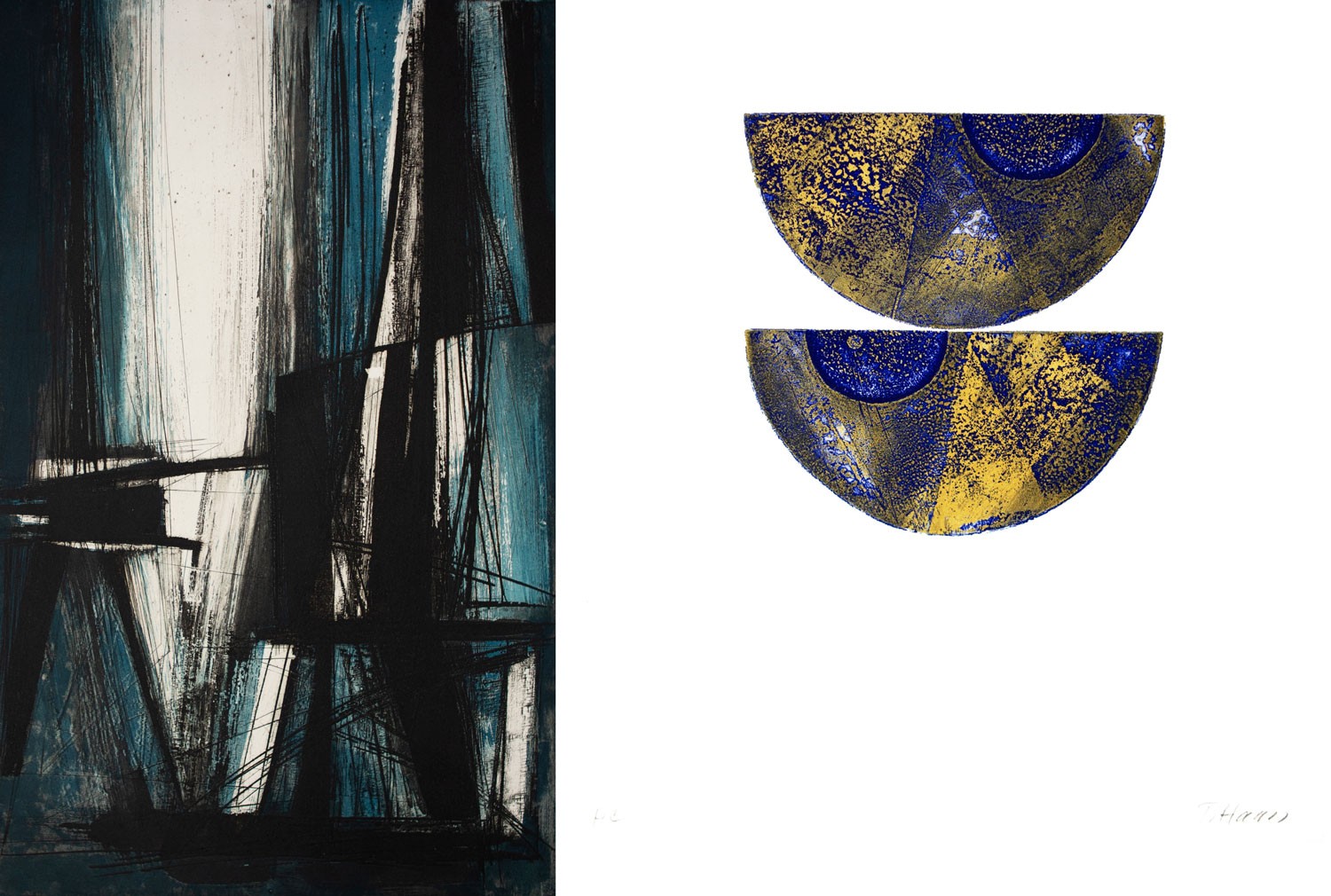
Plein Sud : For the past ten years, you've been the driving force behind the Hartung-Bergman Foundation. Are you still discovering new things about the artists Hans Hartung and Anna-Eva Bergman?
Thomas Schlesser : Plenty, yes! Both in the archives, which are plethoric and always provide new elements on their lives, their encounters and their characters, and in their works too, since there's a sufficiently substantial collection that from time to time you really get the impression of a discovery.
PS : Why did you choose to exhibit Terry Haass's work alongside that of Anna-Eva Bergman and Hans Hartung for the Fondation's 30th anniversary?
TS : I'd wanted to do something with Terry Haass for a long time, and for many reasons. The first is that Terry Haass was Anna-Eva Bergman's best friend, and I sincerely believe that she was very lucky to have Terry Haass, particularly at the end of her life, as a confidante, as a comrade, as a shoulder, because Anna-Eva didn't always have an easy life. Secondly, Terry was an artist. Although extremely little known, she was a particularly good printmaker in the abstract register and was also an excellent sculptor. Finally, the Foundation was fortunate to benefit from a major donation of works by her executor.
PS : What formal, informal and artistic links did Terry Haass have with the Hartung-Bergman couple?
TS : When you look closely at Terry Haass's work, it's astonishing, because it's really at the crossroads of what Hartung and Bergman could develop artistically. Bringing these three names together - Hartung, Bergman and Haass - offers tremendous coherence and a better understanding of Hartung's and Bergman's work. Trained as an archaeologist, Terry Haass also had an extremely romantic life, not least because of his Jewishness and family history.
PS : Do they inspire you on a daily basis?
TS : Yes, and I believe that Terry Haass, like Hartung and Bergmann, when you take the time to look at them and listen to what they have to say, speak to us of things that go far beyond art. About freedom, courage and tenacity. My ambition is truly to show that Hartung, Bergman and Haass are stimulating and exemplary.
PS : Are they known to the local population?
TS : It's a great frustration, but very little... One of the essential ambitions of the Foundation's opening to the public in 2022 was to be part of a territory, and first and foremost on a local scale with the town of Antibes. Unfortunately, despite the interest on a national and international scale, the image and reputation of Hartung and Bergman still need to be worked on with the local public, and even more so for Haass, who is a total discovery in the eyes of art history.
P.S. : Precisely what measures have you been able to put in place to attract these audiences?
TS : Rather, the desacralization of the art market. The public's response has been extraordinary, and they've really appreciated the generosity of the project. The list of artists is impressive and very heterogeneous.

PS : How does the foundation live through the seasons, apart from the summer season, which inevitably brings in more visitors?
TS : The Foundation is both a heritage space that welcomes visitors and a research center that welcomes art historians, curators, curators... Over the course of the year, we welcome a wide range of visitors, but we also promote the work of Hartung and Bergman beyond the walls of the Foundation, for example with the current exhibition at the Espace d'Art Moderne et Contemporaine in Brioude, Le Doyenné, or the retrospective of Anna-Eva Bergman at the National Museum in Oslo. Finally, we participate in university and academic life through seminars, colloquia and meetings outside the times when the Foundation is open to the public.
PS : What might be the outcome(s) of the Hartung-Bergman Foundation research center's current “Landscape and Abstraction” program?
TS : Each program spans two years. Following an exploratory, forward-looking first year consisting of a succession of research seminars, there will be a second, more concrete year. In 2024-2025, the “Landscape and Abstraction” program will feature five seminars, accommodating between six and seven researchers over the course of a year. All exchanges will culminate in a colloquium and an in-house exhibition entitled “Paysages intérieurs”. There will certainly be books, and why not a podcast based on these reflections?